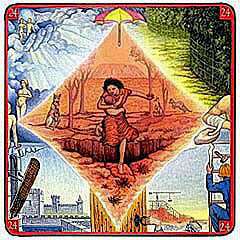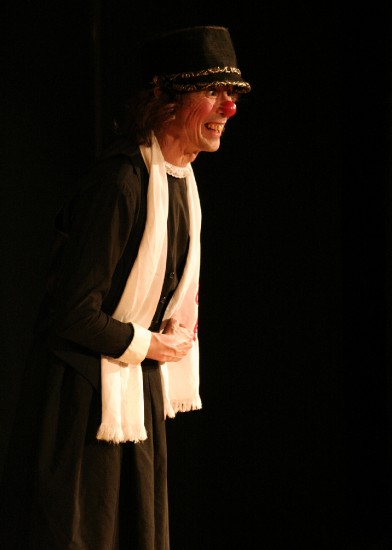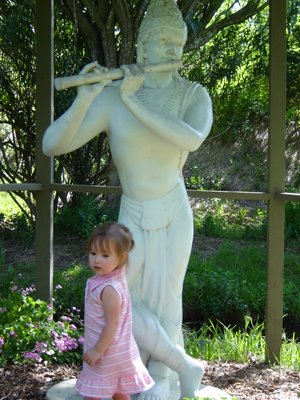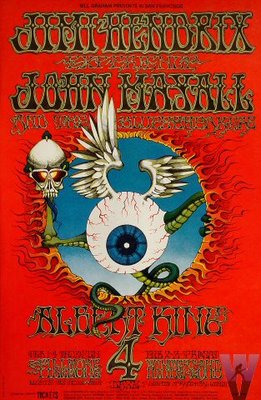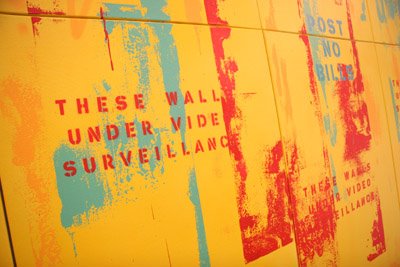 As I get ready to launch off across the country I am putting into perspective what I know and what I don't about the psyche of our people. Howard Zinn is one of the most important figures in america today in the realm of American history.
As I get ready to launch off across the country I am putting into perspective what I know and what I don't about the psyche of our people. Howard Zinn is one of the most important figures in america today in the realm of American history.
America's BlindersBy Howard Zinn, Published on Tuesday, March 21, 2006 by the Progressive Now that most Americans no longer believe in the war, now that they no longer trust Bush and his Administration, now that the evidence of deception has become overwhelming (so overwhelming that even the major media, always late, have begun to register indignation), we might ask: How come so many people were so easily fooled?
The question is important because it might help us understand why Americans-members of the media as well as the ordinary citizen-rushed to declare their support as the President was sending troops halfway around the world to Iraq.
A small example of the innocence (or obsequiousness, to be more exact) of the press is the way it reacted to Colin Powell's presentation in February 2003 to the Security Council, a month before the invasion, a speech which may have set a record for the number of falsehoods told in one talk. In it, Powell confidently rattled off his "evidence": satellite photographs, audio records, reports from informants, with precise statistics on how many gallons of this and that existed for chemical warfare. The New York Times was breathless with admiration. The Washington Post editorial was titled "Irrefutable" and declared that after Powell's talk "it is hard to imagine how anyone could doubt that Iraq possesses weapons of mass destruction."
It seems to me there are two reasons, which go deep into our national culture, and which help explain the vulnerability of the press and of the citizenry to outrageous lies whose consequences bring death to tens of thousands of people. If we can understand those reasons, we can guard ourselves better against being deceived.
One is in the dimension of time, that is, an absence of historical perspective. The other is in the dimension of space, that is, an inability to think outside the boundaries of nationalism. We are penned in by the arrogant idea that this country is the center of the universe, exceptionally virtuous, admirable, superior.
If we don't know history, then we are ready meat for carnivorous politicians and the intellectuals and journalists who supply the carving knives. I am not speaking of the history we learned in school, a history subservient to our political leaders, from the much-admired Founding Fathers to the Presidents of recent years. I mean a history which is honest about the past. If we don't know that history, then any President can stand up to the battery of microphones, declare that we must go to war, and we will have no basis for challenging him. He will say that the nation is in danger, that democracy and liberty are at stake, and that we must therefore send ships and planes to destroy our new enemy, and we will have no reason to disbelieve him.
But if we know some history, if we know how many times Presidents have made similar declarations to the country, and how they turned out to be lies, we will not be fooled. Although some of us may pride ourselves that we were never fooled, we still might accept as our civic duty the responsibility to buttress our fellow citizens against the mendacity of our high officials.
We would remind whoever we can that President Polk lied to the nation about the reason for going to war with Mexico in 1846. It wasn't that Mexico "shed American blood upon the American soil," but that Polk, and the slave-owning aristocracy, coveted half of Mexico.
We would point out that President McKinley lied in 1898 about the reason for invading Cuba, saying we wanted to liberate the Cubans from Spanish control, but the truth is that we really wanted Spain out of Cuba so that the island could be open to United Fruit and other American corporations. He also lied about the reasons for our war in the Philippines, claiming we only wanted to "civilize" the Filipinos, while the real reason was to own a valuable piece of real estate in the far Pacific, even if we had to kill hundreds of thousands of Filipinos to accomplish that.
President Woodrow Wilson-so often characterized in our history books as an "idealist"-lied about the reasons for entering the First World War, saying it was a war to "make the world safe for democracy," when it was really a war to make the world safe for the Western imperial powers.
Harry Truman lied when he said the atomic bomb was dropped on Hiroshima because it was "a military target."
Everyone lied about Vietnam-Kennedy about the extent of our involvement, Johnson about the Gulf of Tonkin, Nixon about the secret bombing of Cambodia, all of them claiming it was to keep South Vietnam free of communism, but really wanting to keep South Vietnam as an American outpost at the edge of the Asian continent.
Reagan lied about the invasion of Grenada, claiming falsely that it was a threat to the United States.
The elder Bush lied about the invasion of Panama, leading to the death of thousands of ordinary citizens in that country.
And he lied again about the reason for attacking Iraq in 1991—hardly to defend the integrity of Kuwait (can one imagine Bush heartstricken over Iraq's taking of Kuwait?), rather to assert U.S. power in the oil-rich Middle East.
Given the overwhelming record of lies told to justify wars, how could anyone listening to the younger Bush believe him as he laid out the reasons for invading Iraq? Would we not instinctively rebel against the sacrifice of lives for oil?
A careful reading of history might give us another safeguard against being deceived. It would make clear that there has always been, and is today, a profound conflict of interest between the government and the people of the United States. This thought startles most people, because it goes against everything we have been taught.
We have been led to believe that, from the beginning, as our Founding Fathers put it in the Preamble to the Constitution, it was "we the people" who established the new government after the Revolution. When the eminent historian Charles Beard suggested, a hundred years ago, that the Constitution represented not the working people, not the slaves, but the slaveholders, the merchants, the bondholders, he became the object of an indignant editorial in The New York Times.
Our culture demands, in its very language, that we accept a commonality of interest binding all of us to one another. We mustn't talk about classes. Only Marxists do that, although James Madison, "Father of the Constitution," said, thirty years before Marx was born that there was an inevitable conflict in society between those who had property and those who did not.
Our present leaders are not so candid. They bombard us with phrases like "national interest," "national security," and "national defense" as if all of these concepts applied equally to all of us, colored or white, rich or poor, as if General Motors and Halliburton have the same interests as the rest of us, as if George Bush has the same interest as the young man or woman he sends to war.
Surely, in the history of lies told to the population, this is the biggest lie. In the history of secrets, withheld from the American people, this is the biggest secret: that there are classes with different interests in this country. To ignore that-not to know that the history of our country is a history of slaveowner against slave, landlord against tenant, corporation against worker, rich against poor-is to render us helpless before all the lesser lies told to us by people in power.
If we as citizens start out with an understanding that these people up there-the President, the Congress, the Supreme Court, all those institutions pretending to be "checks and balances"-do not have our interests at heart, we are on a course towards the truth. Not to know that is to make us helpless before determined liars.
The deeply ingrained belief-no, not from birth but from the educational system and from our culture in general-that the United States is an especially virtuous nation makes us especially vulnerable to government deception. It starts early, in the first grade, when we are compelled to "pledge allegiance" (before we even know what that means), forced to proclaim that we are a nation with "liberty and justice for all."
And then come the countless ceremonies, whether at the ballpark or elsewhere, where we are expected to stand and bow our heads during the singing of the "Star-Spangled Banner," announcing that we are "the land of the free and the home of the brave." There is also the unofficial national anthem "God Bless America," and you are looked on with suspicion if you ask why we would expect God to single out this one nation-just 5 percent of the world's population—for his or her blessing.
If your starting point for evaluating the world around you is the firm belief that this nation is somehow endowed by Providence with unique qualities that make it morally superior to every other nation on Earth, then you are not likely to question the President when he says we are sending our troops here or there, or bombing this or that, in order to spread our values-democracy, liberty, and let's not forget free enterprise-to some God-forsaken (literally) place in the world.
It becomes necessary then, if we are going to protect ourselves and our fellow citizens against policies that will be disastrous not only for other people but for Americans too, that we face some facts that disturb the idea of a uniquely virtuous nation.
These facts are embarrassing, but must be faced if we are to be honest. We must face our long history of ethnic cleansing, in which millions of Indians were driven off their land by means of massacres and forced evacuations. And our long history, still not behind us, of slavery, segregation, and racism. We must face our record of imperial conquest, in the Caribbean and in the Pacific, our shameful wars against small countries a tenth our size: Vietnam, Grenada, Panama, Afghanistan, Iraq. And the lingering memory of Hiroshima and Nagasaki. It is not a history of which we can be proud.
Our leaders have taken it for granted, and planted that belief in the minds of many people, that we are entitled, because of our moral superiority, to dominate the world. At the end of World War II, Henry Luce, with an arrogance appropriate to the owner of Time, Life, and Fortune, pronounced this "the American century," saying that victory in the war gave the United States the right "to exert upon the world the full impact of our influence, for such purposes as we see fit and by such means as we see fit."
Both the Republican and Democratic parties have embraced this notion. George Bush, in his Inaugural Address on January 20, 2005, said that spreading liberty around the world was "the calling of our time." Years before that, in 1993, President Bill Clinton, speaking at a West Point commencement, declared: "The values you learned here . . . will be able to spread throughout this country and throughout the world and give other people the opportunity to live as you have lived, to fulfill your God-given capacities."
What is the idea of our moral superiority based on? Surely not on our behavior toward people in other parts of the world. Is it based on how well people in the United States live? The World Health Organization in 2000 ranked countries in terms of overall health performance, and the United States was thirty-seventh on the list, though it spends more per capita for health care than any other nation. One of five children in this, the richest country in the world, is born in poverty. There are more than forty countries that have better records on infant mortality. Cuba does better. And there is a sure sign of sickness in society when we lead the world in the number of people in prison—more than two million.
A more honest estimate of ourselves as a nation would prepare us all for the next barrage of lies that will accompany the next proposal to inflict our power on some other part of the world. It might also inspire us to create a different history for ourselves, by taking our country away from the liars and killers who govern it, and by rejecting nationalist arrogance, so that we can join the rest of the human race in the common cause of peace and justice.
Howard Zinn is the co-author, with Anthony Arnove, of "Voices of a People's History of the United States."
2006 the Progressive
